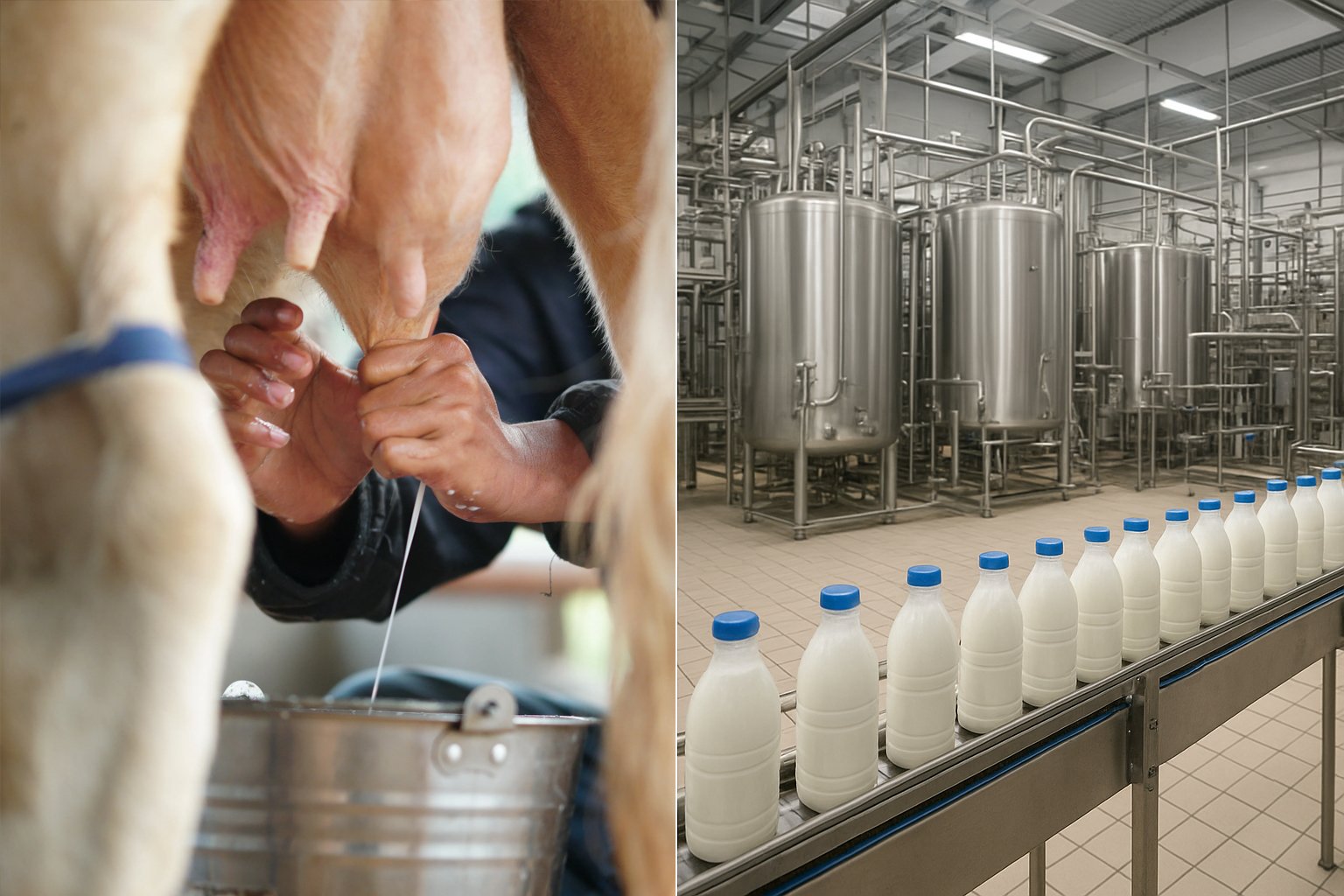
Industrial vs. Traditional Dairy Products: A Comprehensive Comparison – Which Should We Choose?
Milk and dairy products have been an essential part of human nutrition for centuries. Today, consumers face two main production approaches: industrial (processed) and traditional (farm-style) products. Both have their own advantages and disadvantages, and the choice often depends on the consumer’s lifestyle, health status, and values.
Industrial Dairy Products
Industrial production is carried out in large-scale facilities using modern technologies. Processes such as pasteurization, UHT (Ultra High Temperature), and homogenization are applied.
✅ Advantages
-
Long shelf life: Pasteurization and UHT techniques allow products to be stored for weeks or even months without spoiling.
-
Consistent quality: Taste, texture, and color remain the same in every batch, ensuring consumers always get the same product.
-
Easy accessibility: Available all year round in supermarkets, grocery stores, and online markets.
-
Time-saving: No need for boiling, fermenting, or other preparation steps.
-
Nutrient fortification: Vitamins and minerals such as vitamin D, calcium, or omega-3 can be added.
❌ Disadvantages
-
Loss of probiotics: High heat treatment may destroy beneficial bacteria naturally found in yogurt and kefir.
-
Additives: Stabilizers and preservatives may be added to maintain texture and extend shelf life.
-
Loss of natural structure: Homogenization alters the fat structure of milk, potentially breaking down certain nutrients.
-
Environmental impact: Packaging materials like plastic bottles and cartons create waste.
Traditional (Farm-Style) Products
This method involves sourcing milk directly from producers or small-scale dairies, often using raw or lightly heat-treated milk.
✅ Advantages
-
Natural and additive-free: Contains no preservatives, stabilizers, or artificial sweeteners.
-
Rich nutrient profile: Raw milk is richer in vitamin B12, CLA (conjugated linoleic acid), and certain enzymes.
-
Live probiotics: Probiotics remain alive in traditionally made yogurt and kefir.
-
Support for local production: Consumers can learn about the producer’s animal feeding methods and hygiene standards.
❌ Disadvantages
-
Microbial risk: Raw milk may contain pathogens like Brucella, E. coli, or Salmonella; boiling is necessary.
-
Time and effort required: Involves steps like boiling, cooling, and fermenting.
-
Short shelf life: Natural products may sour or spoil within a few days.
-
Price: Often more expensive compared to industrial milk.
Health Perspective
-
Lactose intolerance: Industrially produced lactose-free milk is more suitable for those with intolerance.
-
Infants and elderly nutrition: Pasteurized products are safer due to lower pathogen risk.
-
Probiotic needs: Traditional fermented products are better for supporting gut health.
Economy and Accessibility
-
Industrial products: Available year-round in every city thanks to strong logistics networks.
-
Traditional products: Usually found in areas close to producers or at specific market days.
Environmental Impact
-
Industrial production: Creates higher packaging waste and carbon footprint.
-
Local production: Reduces carbon emissions due to shorter transportation distances, but may have weaker storage conditions.
Cultural Aspect
Traditional production is a form of cultural heritage, preserving regional flavors and recipes passed down through generations. Industrial production, on the other hand, tends to standardize taste and reduce diversity.
Preference Guide
✔ Industrial products are ideal for:
-
People with busy schedules
-
Those who need long-term storage
-
Consumers seeking consistent taste
✔ Traditional products are ideal for:
-
People who prefer natural and additive-free nutrition
-
Those who trust the source of the milk
-
Consumers looking for probiotic benefits
Recommendations
-
Pasteurize raw milk at at least 72°C for 15 seconds before consumption.
-
Ask about the producer’s hygiene standards and animal health practices.
-
For industrial products, choose additive-free, organic, or pasteurized options.
-
Whenever possible, choose glass bottles or recyclable packaging.


